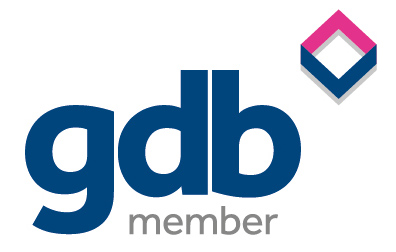Harvey John
Unit 2 Ferry Wharf
Hove Enterprise Centre
Basin Road North
Portslade, East Sussex
BN41 1BD
So VAR so good…how to accept new innovations within your business
If you’re a football fan (or if you simply follow the news from time to time) you probably came across the first major VAR (video assistant referee) controversy in England that happened last week. The use of VAR in the FA Cup replay between Chelsea and Norwich has spiked a hot discussion and can be a valuable lesson for various businesses.
Technological disruption
The word ‘disruption’ is probably one of the most overused terms in recent years. We hear how Bitcoin is disrupting the financial market, how Airbnb and Uber disrupted the hospitality industry etc. And let’s be honest, with the pace we’re currently living, the accurate motto to describe our times would be ‘Change is the only constant’. And yet we still tend to resist changes. How can we make sure that a new invention is going to be embraced by the public and will go smoothly, without causing outrage?
Well-thought innovation
Let’s think of the recruitment industry for example. It’s been influenced by various trends and inventions recently. Can you envision applying VAR to this business? Imagine sitting in an interview where after every sentence the interviewer could indicate that she wants to verify the data you referred to. Simply press pause, rewind, compare your words with other sources, and press play again. That sounds pretty weird, right? A bit like a Black Mirror scenario. What if we told you that it already exists?
Have you heard of video interviewing tools? HireVue? You log on to the platform, record your answers to the questions and interviewers then watch and rate your responses. There are discussions surrounding the benefits and disadvantages of that style of recruitment but many candidates see the value. For example, the flexibility or the savings in time/money on travel, compared to a face-to-face interview (especially if you apply for a role abroad). What is really crucial in this example is that the video interview only constitutes one part of the process and at a later stage (in most cases) you will get a face-to-face or at least an interactive (e.g. Skype) interview.
The key to success here is to perform a cost-benefit analysis with a specific focus on major stakeholders. Going back to our main topic – football – for sure the fairness of the play has been the central point of discussion here. But when thinking of the most crucial stakeholders, fans, we should make sure that we’re not missing something important…
Value of emotions
“It’s no longer football… it’s turning into water polo.”
The initial feedback that companies received after implementing the video interviewing tool was that the process was ‘faceless’, and ‘robotic’. The candidates felt like speaking to the computer. Enterprises came up with various solutions to those claims. To just mention a few: they are now recording their employees to imitate the face-to-face interaction, they also give you unlimited time to prepare yourself and test the tool, or they even record their questions so it feels like a conversation (instead of just displaying the questions on the screen).
The main problem with most technology innovations is that they sometimes value precision/efficiency more than some less tangible aspects.
“The players do not know anymore whether or not to celebrate after a goal”(Juventus midfielder)
“A lot of emotion and passion has been lost.” (Italy’s legendary goalkeeper Gianluigi Buffon)
When thinking of sport in general, even though it’s business, shouldn’t we put the emotions of the spectators at the centre of this industry? And try not to go too ‘techy’ as we could be leaving the fans behind for the sake of 100% accuracy.
And the most critical point:
Implementation
That’s actually the biggest fault in the case of the VAR.
Using the video interviews as a model here – providers tried to make sure to get this part right. They:
- Ran various tests to ensure a seamless experience for the end-user
- Prepared campaigns that would inform the target users of the benefits behind the new solution
- Involved some influencers to promote the tool
- The tests have been performed live. The system implementation in Germany turned into a PR disaster. After allegations regarding the VAR Project Manager influencing the system for his home town club, the technology then broke down regularly
- The spectators don’t see that much of a value in it. The benefits of using VAR have not been promoted accordingly and the downsides have not been resolved (yet)
- Various prominent football figures criticize VAR heavily. Alan Shearer called it a ‘shambles’ and Aleksander Ceferin (The president of UEFA) warned that he might block the use of video technology in the Champions League and Nations League
All in all, we ought to consider all the pros and cons of new inventions. We need to make sure that they actually add value to our lives. What’s more – let’s not forget the importance of the implementation and a smooth transition process (including various tests, crucial influencers’ engagement and an informative campaign for the major stakeholders).
To end on a positive note, even after initial discontent, we can always try adjusting an invention to meet public expectations. As for VAR – in the pilot experiment – yesterday’s game (Arsenal vs. Chelsea) showed VAR on the Emirates big screens. And there’s more: those who were watching the game on TV could hear the referees’ dialogue. Hopefully, we’re one step closer to finding a perfect solution.
Let’s enjoy the upcoming matches, welcome VAR (it doesn’t look like it’s going anywhere) & embrace change!
—
David Waddell is the Managing Director at Harvey John.
If you would like to see our company updates and industry insights, follow our LinkedIn page.
Author

Alongside his commercial responsibilities, David focusses on qualified accountancy recruitment working with an extensive network across accountancy firms as well as commercial businesses on either an interim or permanent basis.
Clients range from boutique practices as well as leading regional and national accountancy firms to SME's, multinational organisations and PE backed businesses experiencing high growth.







